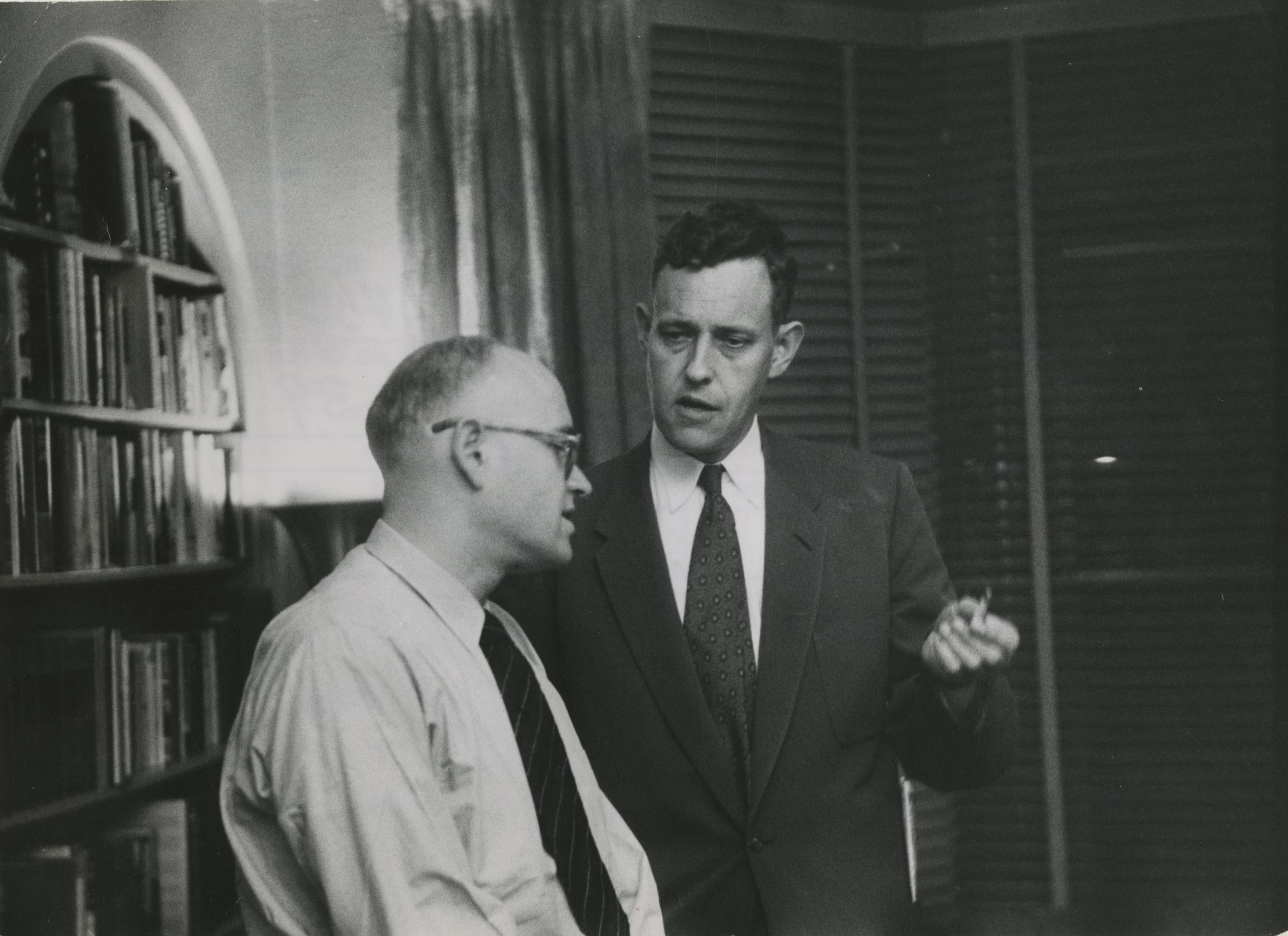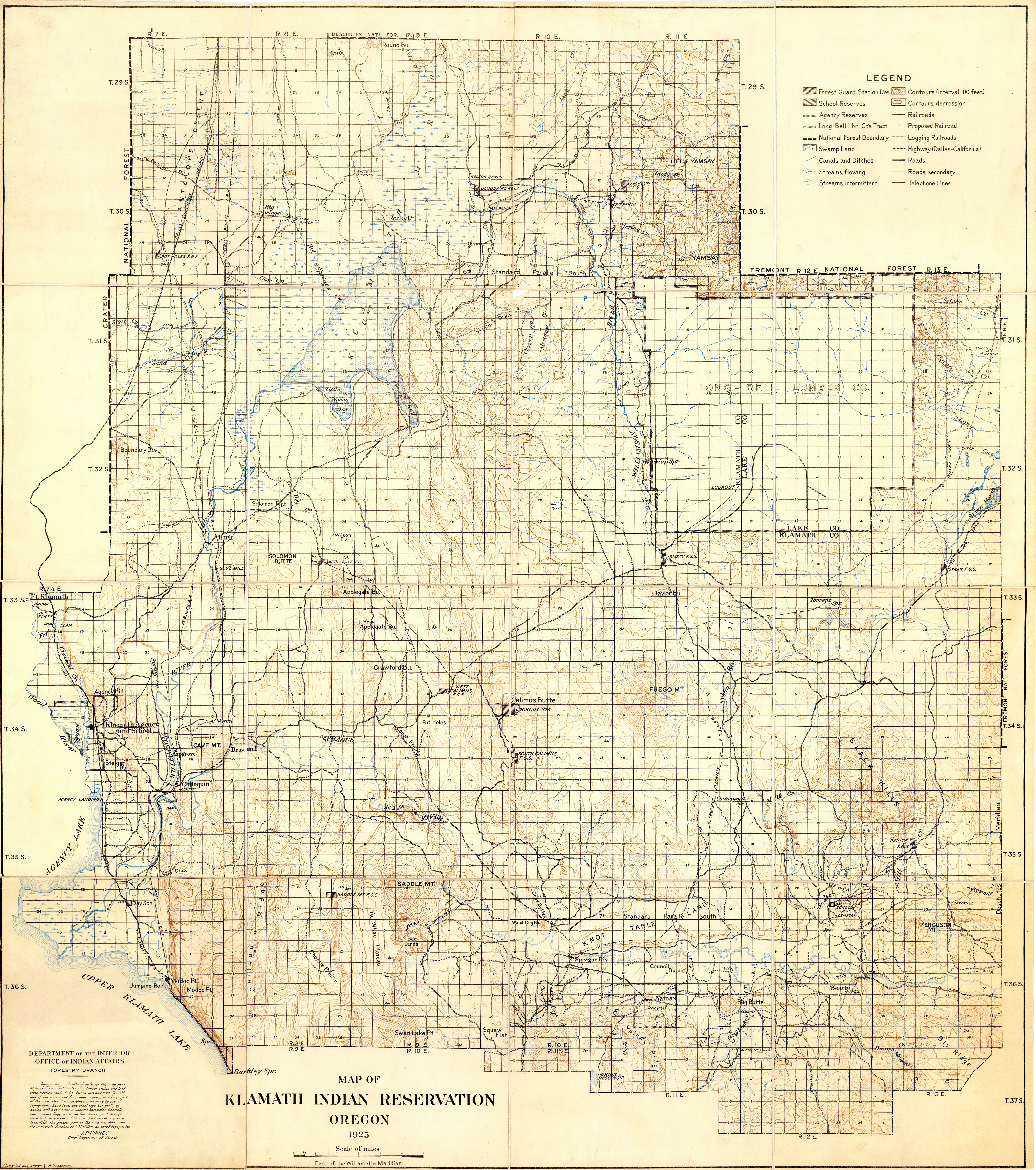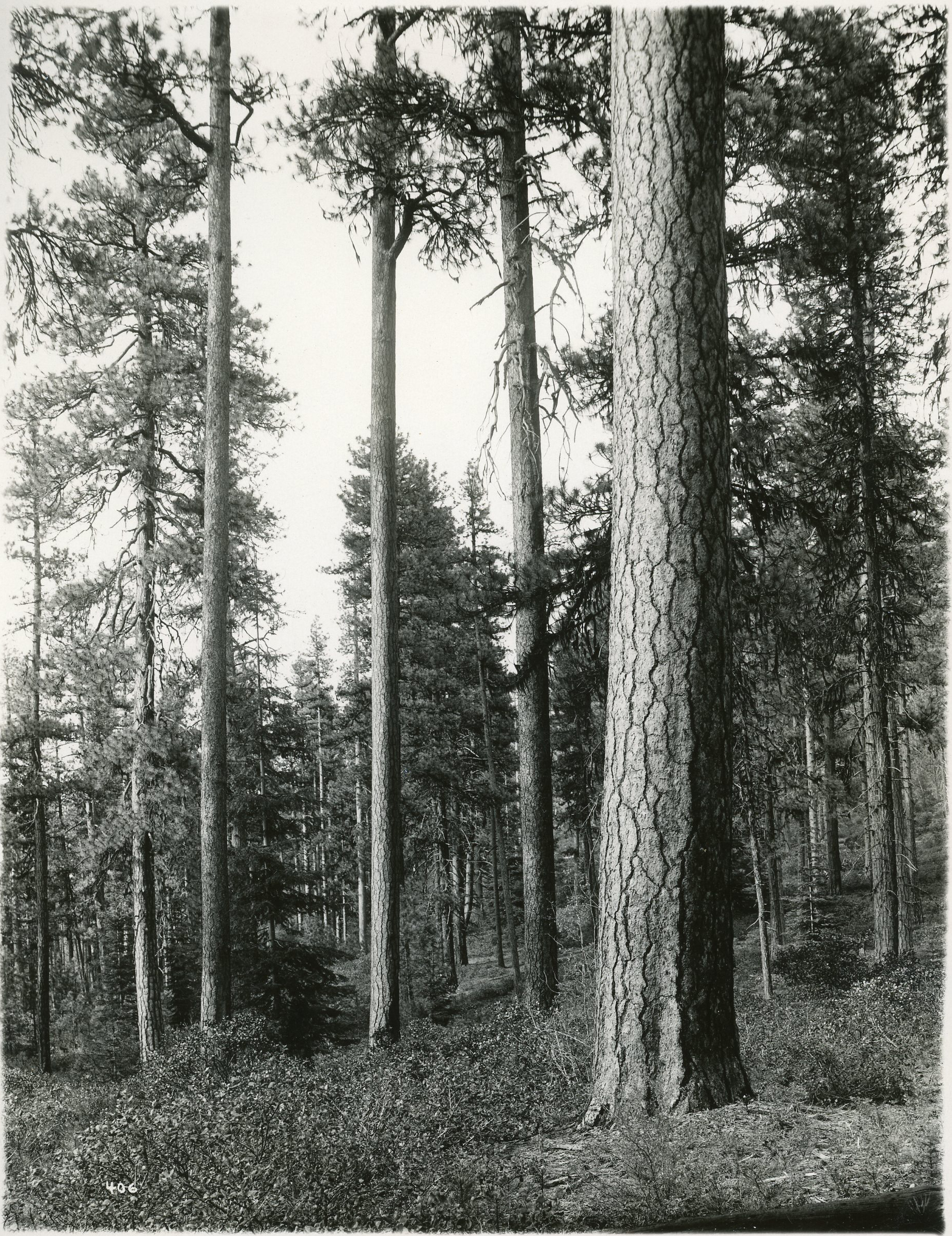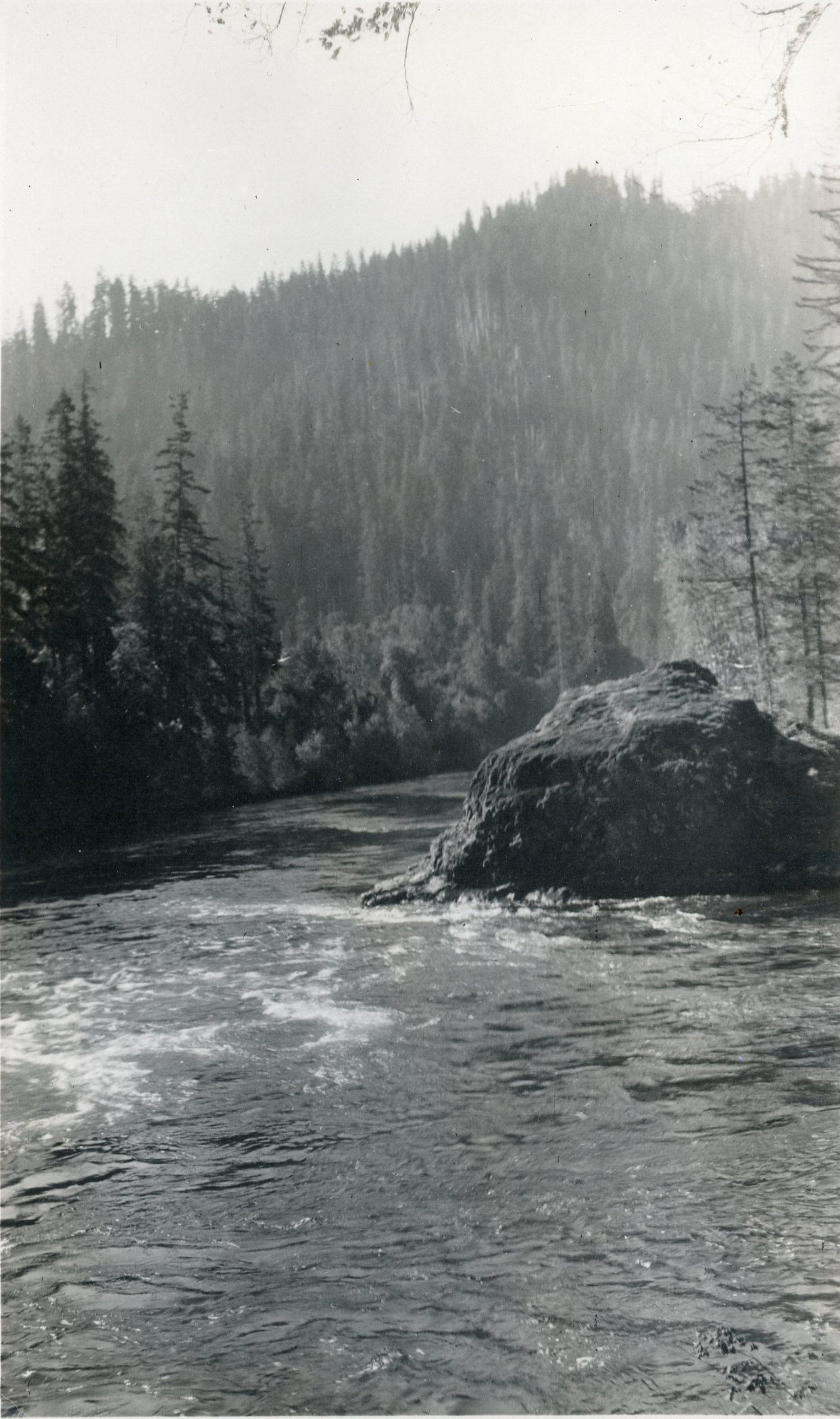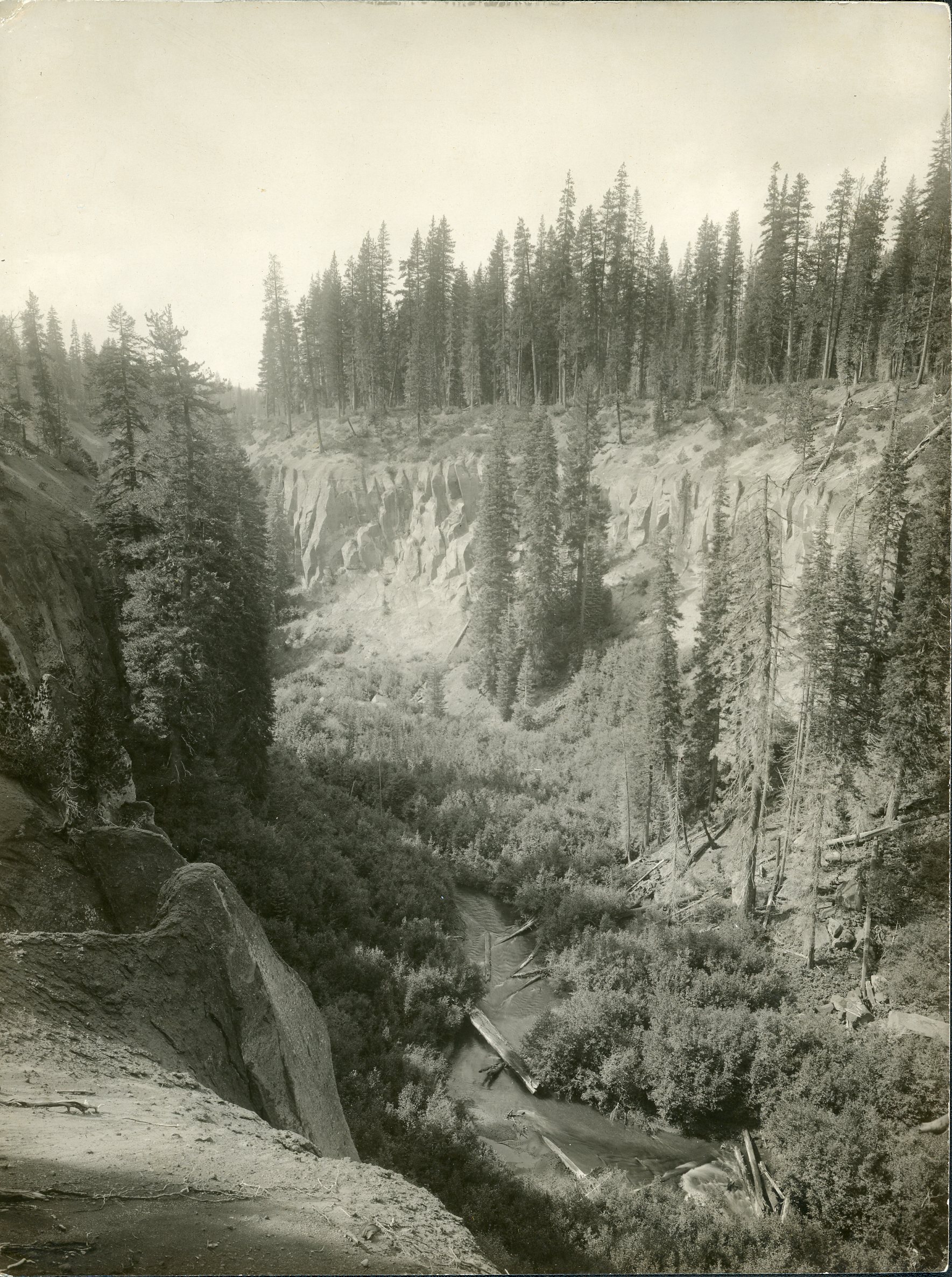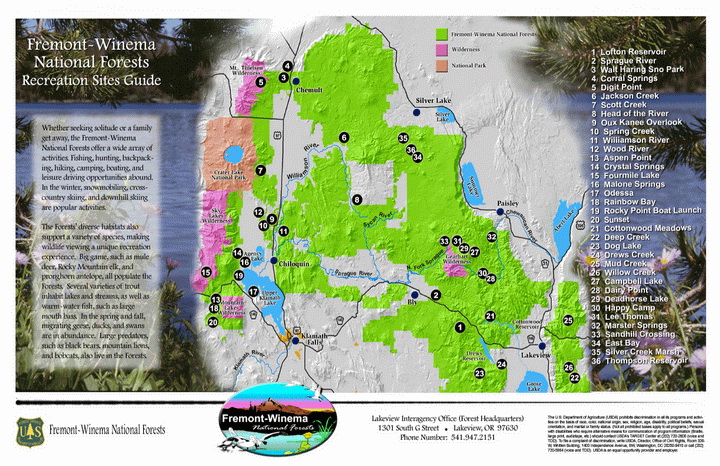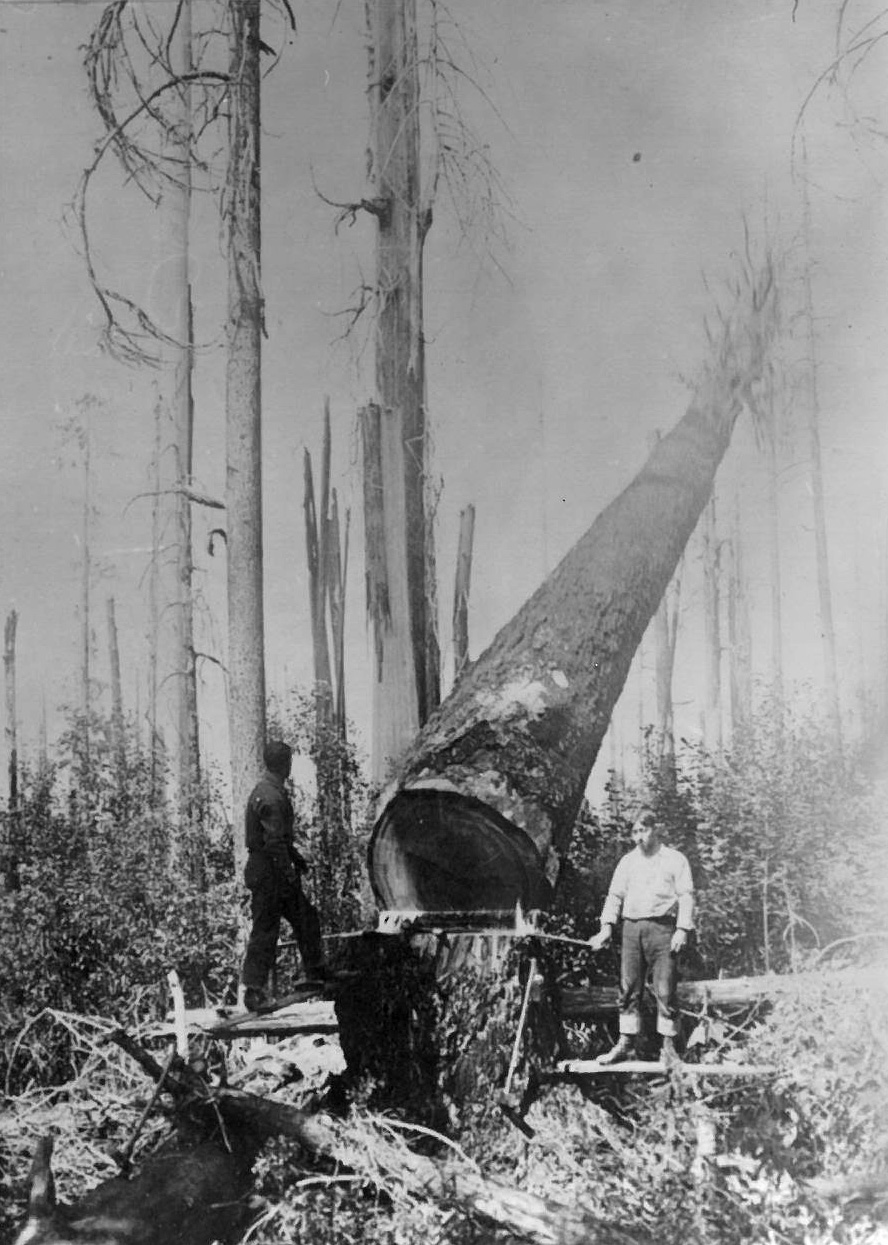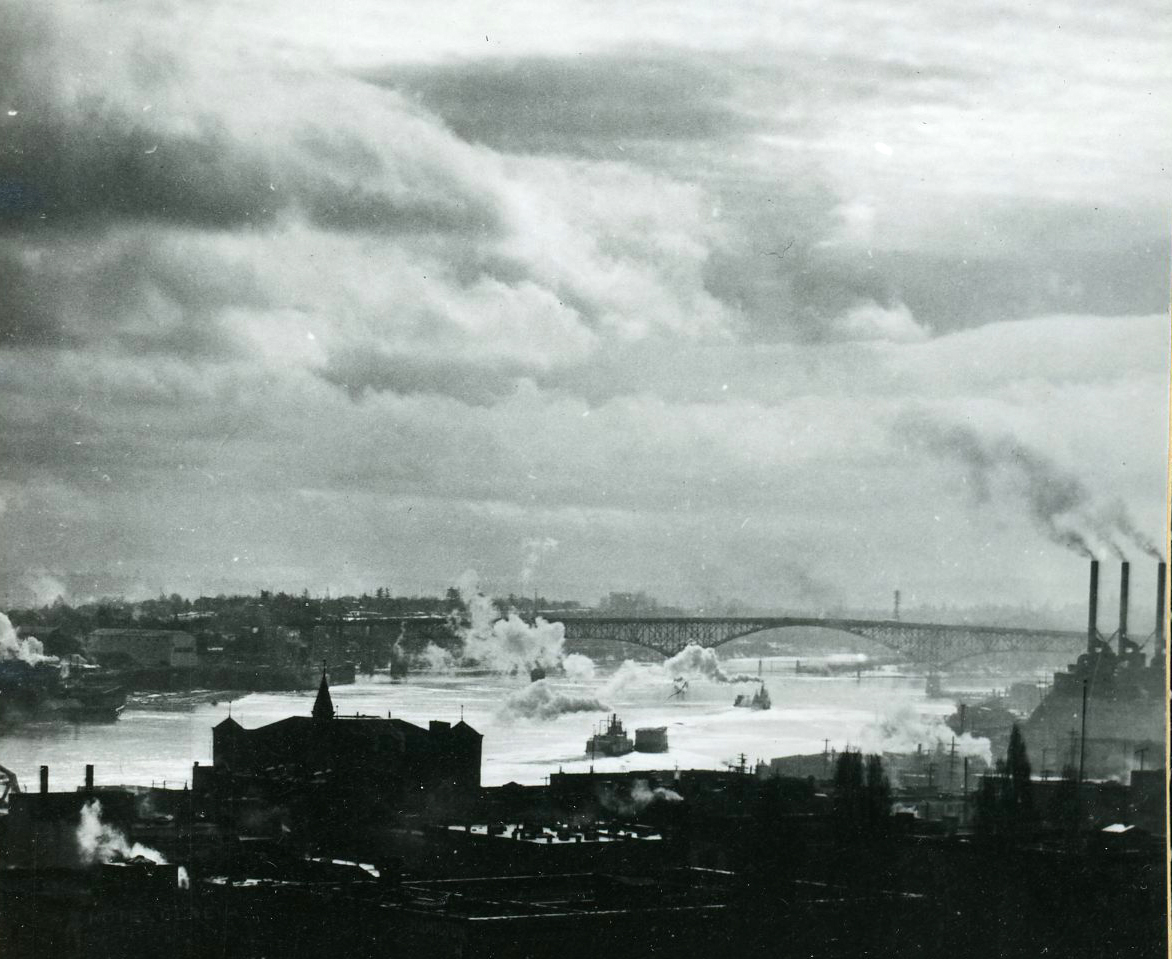The 1958 KGW-TV documentary Crisis in the Klamath Basin broke important new ground for producer Tom McCall, the genre of documentary television, and above all the state of Oregon. Crisis marked an important foray into the politics of environmental conservation that would typify McCall’s future efforts as governor. His award-winning production represented one of the first long-form documentary programs produced by a local television news station. Most significantly, Crisis generated vital support both in Oregon and in Washington, D.C., for a bipartisan plan forged by U.S. Senator Richard Neuberger and Interior Secretary Fred Seaton to save the Klamath Basin’s timber industry following the termination of the Klamath Indian tribes.
United States tribal termination policy during the 1950s had serious consequences for many Native peoples. In southern Oregon, the impact of termination on the Klamath was very nearly coupled with devastating economic consequences for the region’s timber industry. The Klamath Reservation’s ponderosa pine forest had been placed under sustained-yield management in 1913. After World War II, careful husbandry of the tribes’ 1,107,846 acres had generated 26 percent of Klamath County’s saw timber volume, and annual tribal revenue of approximately $2.5 million. The Klamath Basin drew 40 percent of its economic wealth from timber.
In 1954, the U.S. Senate passed Public Law 587, terminating the Klamath tribes. The legislation initially seemed to provide for a gradual transition, with tribal funds husbanded in a private trust. Like many white liberals at the time, Neuberger favored termination. Just before the bill was passed, however, a new provision allowed any tribal member to claim a proportionate share of the reservation’s value.
While tribal leadership consistently opposed termination, 77 percent of tribal members voted to accept the cash settlement. Neuberger recognized that in order to fund such a large payout, however, officials would be forced to approve timber sales that would quickly pour 3.3 billion feet of logs onto the market. Doing so would flood the market with inexpensive logs in the short term and leave Klamath Basin mills without a sustainable source of timber for the future. Neuberger and others believed that “certain lumber operators, eager for a quick financial killing,” were behind the settlement provision, and he was determined to stop what he considered an impending economic disaster.
Neuberger’s solution was to move the Klamath timber tracts and adjacent marsh into federal ownership. Oregon lawmakers joined his cause. In a side job as a legislative staffer for Oregon’s Interim Committee on Indian Affairs, McCall provided much of the legwork for a state-level investigation of conditions for Oregon Indians. He, too, became convinced that the “finest stand of yellow pine in North America would have to be clear-cut unless the government intervened.”
Signs of McCall’s conservationist ethos as governor were beginning to emerge, and he lamented the impending destruction of the region’s “priceless scenic values.” Like Neuberger, McCall’s motives were predominantly financial. His language in the state committee report, however, does indicate some sympathy for the Klamath people, whose “potential for improving his lot through education has been balked by enervating paternalism, government short sightedness and maladministration, white man’s avarice and prejudice and a history of feast for some Indians and famine for many others.”
Public ownership, however, was a difficult sell. Termination was billed as a victory for free enterprise, and Neuberger recalled that Oregon conservatives had “made a lively issue of the fact that the federal government owned half the land area of the state.” Some conservatives who took time to study the situation such as Frank Jenkins, the publisher of the Klamath Falls Herald and News, came to share Neuberger’s concerns.
McCall was uniquely positioned to bring these concerns to a much broader audience. He persuaded KGW head Tom Dargan to let him produce a documentary about what was happening in the Klamath Basin. Using data from his committee work, McCall crafted a sixty-minute film. When Crisis in the Klamath Basin aired on April 27, 1958, it drew an estimated 200,000 viewers in the Portland and Klamath Falls markets—over half the combined population of both cities at the time.
The success of the documentary helped signal a new era in television journalism and, as biographer Brent Walth observed, transformed McCall from an analyst into an advocate. The film reflected “McCall’s evolving conservationist ideology: the need for a clear balance of environment with jobs, with government—not the free market—in control of natural resources.” McCall won his first environmental award for the documentary, the Golden Beaver from the Izaak Walton League of Oregon. Four years later, a second groundbreaking documentary, Pollution in Paradise, would firmly establish his conservationist credentials.
Neuberger showed McCall’s film to the staff of both the House and Senate Interior Committees in Washington, D.C. Senate Bill 3051, which passed on August 23, 1958, provided for the sale of some large blocks of timber to private interests but only under strict conditions, including fair market value and submission to federal sustainable-yield regulations. The U.S. Department of Agriculture, which administers the U.S. Forest Service, could purchase what remained. The department bought 535,680 acres in 1959 and an additional 135,000 acres in 1973, land that had been held in trust for those Klamath who had not initially voted for termination. Former Klamath lands now comprise over 50 percent of the Fremont-Winema National Forest.
-
![]()
Richard Neuberger and Tom McCall.
Courtesy Oregon Hist. Soc. Research Lib., OrHi52893
-
![Klamath Tribal Council, 1955]()
Klamath Tribal Council, 1955.
Klamath Tribal Council, 1955 Courtesy Oreg. Hist. Soc. Research Lib., OrHi 02356
-
![]()
Klamath Reservation map, 1925.
Courtesy Oregon Historical Society Library
-
![]()
Yellow pine forest in Klamath County.
Courtesy Oregon Hist. Soc. Research Lib., 54347
-
![]()
Klamath County forests.
Courtesy Oregon Hist. Soc. Research Lib.
-
![]()
Annie Creek Canyon, part of Fremont-Winema National Forest.
Courtesy Oregon Hist. Soc. Research Lib., bb001733
-
![]()
Map of Fremont-Winema National Forest.
Courtesy U.S. Forest Service
Related Entries
-
![Native American Loggers in Oregon]()
Native American Loggers in Oregon
In pre-settlement times, native peoples of the Pacific Northwest Coast …
-
![Pollution in Paradise (documentary film)]()
Pollution in Paradise (documentary film)
KGW-TV aired Tom McCall’s one-hour documentary Pollution in Paradise on…
-
![Richard Neuberger (1912-1960)]()
Richard Neuberger (1912-1960)
When he was elected to the United States Senate in 1954, Richard Neuber…
-
![Termination and Restoration in Oregon]()
Termination and Restoration in Oregon
Termination Of the federal-Indian policies introduced to American Indi…
-
![Thomas William Lawson McCall (1913-1983)]()
Thomas William Lawson McCall (1913-1983)
Tom McCall, more than any leader of his era, shaped the identity of mod…
Related Historical Records
Map This on the Oregon History WayFinder
The Oregon History Wayfinder is an interactive map that identifies significant places, people, and events in Oregon history.
Further Reading
“Fremont-Winema National Forests History,” U.S. Forest Service, http://www.fs.usda.gov/detail/fremont-winema/about-forest/?cid=fsbdev3_061912, accessed 11 February 2016.
Hood, Susan. "Termination of the Klamath Indian Tribe of Oregon." Ethnohistory 19:4 (Autumn 1972): 379-392.
McCall, Tom, with Steve Neal. Tom McCall: Maverick. Portland, Ore.: Binford and Mort, 1977.
Neuberger, Richard. “How Oregon Rescued a Forest.” Orig. published in Harper’s, April 1959. In Steve Neal, ed. They Never Go Back to Pocatello: The Selected Essays of Richard Neuberger. Portland: Oregon Historical Society Press, 1988, pp. 309-317.
"Number of Inhabitants, Oregon," U.S. Census Bureau, 1960, accessed 11 March 2016.
Report of the Legislative Interim Committee on Indian Affairs. A Reintroduction to the Indians of Oregon. (Salem, Ore.: October 1958).
Walth, Brent. Fire at Eden’s Gate: Tom McCall and the Oregon Story. Portland: Oregon Historical Society Press, 1994.

